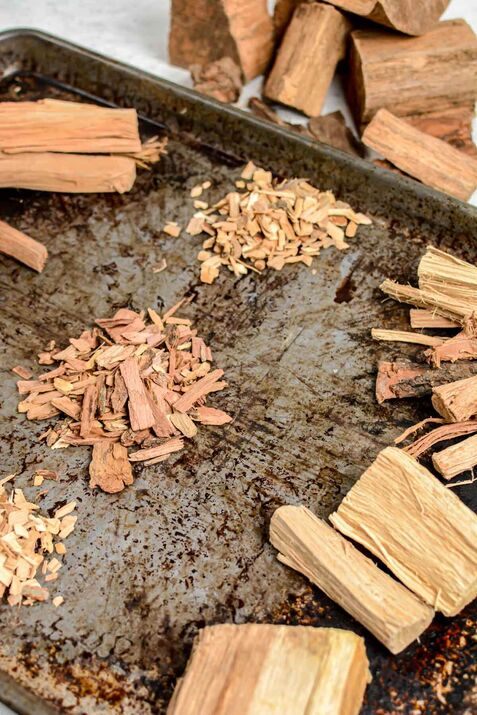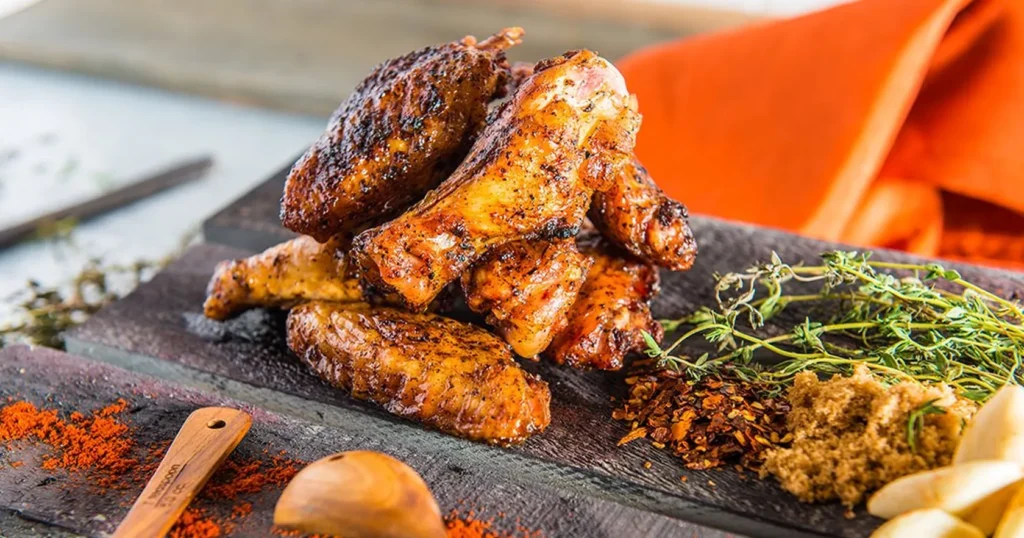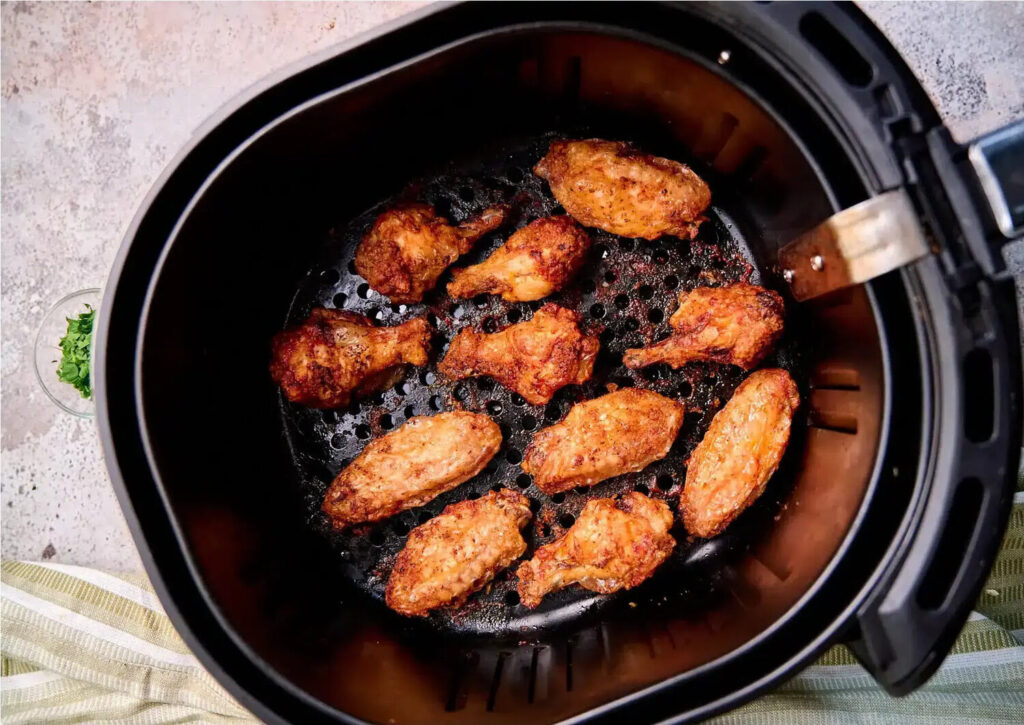Chicken wings are a versatile and beloved dish, perfect for game days, parties, or simple family dinners. There are numerous ways to cook chicken wings, each offering a unique flavor and texture.
Whether you prefer baking, grilling, air frying, or smoking, mastering these techniques can elevate your wing game to the next level. This comprehensive guide will walk you through the best methods and cooking techniques for chicken wings.

Baking
Baking chicken wings is a popular method for achieving a crispy texture without the extra calories and mess of frying. It’s also a convenient way to cook large batches, making it ideal for gatherings and parties.
How to Bake Crispy Wings
Baking chicken wings to crispy perfection requires attention to detail and a few key techniques:

- Prep the Wings: Start by patting the wings dry with paper towels to remove excess moisture. This step is crucial for achieving a crispy skin.
- Seasoning: Toss the wings in a mixture of baking powder and your favorite seasonings. Baking powder helps draw out moisture and enhances crispiness.
- Seasoning Varieties: Consider different seasoning blends such as a spicy cayenne pepper mix, a herbaceous rosemary and thyme blend, or a savory garlic and onion powder mix.
- High Heat: Preheat your oven to 425°F (220°C). Baking at a high temperature ensures that the wings cook quickly and the skin crisps up nicely.
- Use a Rack: Place the wings on a wire rack set over a baking sheet. This allows air to circulate around the wings, helping them cook evenly and stay crispy.
- Flip and Rotate: Halfway through baking, flip the wings and rotate the baking sheet to ensure even cooking.
- Finishing Touch: For extra crispiness, broil the wings for the last few minutes of cooking, keeping a close eye on them to prevent burning.
- Troubleshooting Tips: If your wings are soggy, make sure they are properly dried before baking. Uneven cooking can be addressed by ensuring the wings are spread out in a single layer and not touching each other.
Baking vs. Frying
Baking and frying are two popular methods for cooking chicken wings, each with its own set of pros and cons:
- Baking:
- Pros: Healthier, less messy, and easier for cooking large batches.
- Cons: May not achieve the same level of crispiness as frying.
- Frying:
- Pros: Achieves maximum crispiness and traditional flavor.
- Cons: Higher in calories, messier, and requires more oil.

Both methods can produce delicious wings, but baking is often preferred for its convenience and healthier profile.
Comparative Recipes
- Baked Wings Recipe: Pat dry and coat 2 pounds of wings with 1 tablespoon baking powder, 1 teaspoon salt, 1 teaspoon pepper, and additional seasonings as desired. Bake at 425°F on a wire rack for 30-40 minutes, flipping halfway through.
- Fried Wings Recipe: Heat oil to 375°F in a deep fryer. Fry wings in batches for 10-12 minutes until golden and crispy. Drain on paper towels and season immediately with salt.
Nutritional Information
- Baked Wings: Typically contain fewer calories and less fat compared to fried wings. For example, 100 grams of baked wings have around 200 calories and 10 grams of fat.
- Fried Wings: Generally higher in calories and fat. 100 grams of fried wings have approximately 290 calories and 20 grams of fat.
Grilling
Grilling chicken wings infuses them with a smoky, charred flavor that is hard to beat. This method is perfect for outdoor cooking and adds a distinctive taste to your wings.
Tips for Perfectly Grilled Wings
Grilling wings to perfection involves a few essential tips:

- Preheat the Grill: Ensure your grill is preheated to medium-high heat before adding the wings. This helps prevent sticking and ensures even cooking.
- Oil the Grill Grates: Lightly oil the grill grates to prevent the wings from sticking.
- Direct and Indirect Heat: Start by searing the wings over direct heat to get a nice char, then move them to indirect heat to finish cooking. This prevents burning while ensuring they are cooked through.
- Keep the Lid Closed: Closing the grill lid helps maintain a consistent temperature and infuses the wings with a smoky flavor.
- Monitor Closely: Wings can cook quickly on the grill, so keep a close eye on them to avoid overcooking.
- Grilling Tools: Use essential tools like long-handled tongs for easy flipping, a meat thermometer to check doneness, and a grill brush for cleaning the grates.
- Advanced Techniques: Experiment with indirect grilling by setting up a two-zone fire—one side with direct heat and the other with indirect heat for more control over cooking.
Best Grilling Marinades
Marinades can enhance the flavor of grilled chicken wings significantly. Here are a few popular options:
- Classic Buffalo Marinade: Combine hot sauce, melted butter, garlic powder, and a splash of vinegar for a spicy, tangy flavor.
- Asian-Inspired Marinade: Mix soy sauce, honey, ginger, garlic, and sesame oil for a sweet and savory profile.
- Lemon Herb Marinade: Blend olive oil, lemon juice, garlic, thyme, and rosemary for a fresh and zesty taste.
- Barbecue Marinade: Use your favorite barbecue sauce, mixed with a bit of apple cider vinegar and brown sugar for a smoky, sweet kick.
- Additional Marinades: Try a spicy Sriracha marinade (Sriracha, soy sauce, and honey) or a tangy citrus marinade (orange juice, lime juice, garlic, and chili powder).

Marinate the wings for at least an hour, or overnight for more intense flavor.
Marinating Tips
- Timing: Marinate wings for at least one hour to overnight for the best flavor infusion.
- Containers: Use a resealable plastic bag or a glass container to marinate wings, ensuring they are evenly coated.
- Max Flavor: Periodically turn the wings to ensure even marinating and maximum flavor absorption.
Air Frying
Air frying is a modern and healthier alternative to traditional frying. It uses hot air circulation to cook food, resulting in crispy, delicious wings with less oil.
Air Fryer Recipes
Air fryers are versatile and can be used to make a variety of chicken wing recipes:
- Classic Crispy Wings: Toss wings in a mixture of baking powder, salt, and pepper. Air fry at 400°F (200°C) for 20-25 minutes, shaking the basket halfway through.
- Garlic Parmesan Wings: Coat wings in olive oil, garlic powder, and grated Parmesan cheese. Air fry until crispy and golden, then sprinkle with more Parmesan and chopped parsley.
- Honey BBQ Wings: Toss wings in a mixture of honey, barbecue sauce, and a touch of cayenne pepper. Air fry until caramelized and crispy.
- Buffalo Wings: Coat wings in a blend of hot sauce, melted butter, and a dash of Worcestershire sauce. Air fry and serve with a side of blue cheese dressing.
- Creative Recipes: Try spicy Korean wings (gochujang, soy sauce, honey, garlic) or teriyaki-glazed wings (teriyaki sauce, ginger, garlic).

Benefits of Air Frying
Air frying offers several benefits over traditional frying:
- Healthier: Uses significantly less oil, reducing calories and fat content.
- Convenient: Easy to use and requires minimal cleanup.
- Versatile: Can cook a wide variety of foods, not just wings.
- Quick: Cooks food faster than an oven, making it ideal for busy weeknights.
Common Mistakes
- Overcrowding: Avoid overcrowding the basket to ensure even cooking and maximum crispiness.
- Not Shaking: Shake the basket halfway through cooking to ensure even browning.
- Improper Seasoning: Season wings adequately before air frying to enhance flavor.
Smoking
Smoking chicken wings imparts a rich, deep flavor that is unparalleled. This method requires more time and effort but rewards you with succulent, flavorful wings.
Smoking Techniques
To achieve perfectly smoked wings, follow these techniques:

- Prep the Wings: Pat the wings dry and season them with your favorite dry rub. Let them sit for at least an hour to absorb the flavors.
- Choose the Right Smoker: Use a smoker that maintains a consistent temperature. Electric, charcoal, and pellet smokers are all good options.
- Low and Slow: Smoke the wings at a low temperature, around 225°F (110°C), for about 2-3 hours. This slow cooking process allows the smoke to penetrate the meat fully.
- Baste Occasionally: Baste the wings with a mixture of apple juice and your favorite sauce to keep them moist and add extra flavor.
- Finish with High Heat: To crisp up the skin, increase the smoker temperature or transfer the wings to a hot grill for a few minutes at the end of cooking.
- Advanced Smoking Methods: Experiment with cold smoking or reverse searing to achieve different textures and flavors.
Best Woods for Smoking Wings
The type of wood you use for smoking can greatly influence the flavor of your chicken wings. Here are some of the best options:

- Hickory: Provides a strong, smoky flavor that pairs well with rich, hearty rubs and sauces.
- Applewood: Offers a sweet, mild smoke that complements a variety of marinades and seasonings.
- Cherrywood: Gives a slightly fruity, sweet flavor that adds depth to the wings.
- Pecan: Delivers a rich, nutty flavor that works well with both sweet and savory profiles.
- Mesquite: Offers an intense, bold smoke flavor, best used sparingly or in combination with milder woods.
- Wood Combinations: Combine different woods to create unique flavor profiles, such as hickory with applewood for a balanced smoky and sweet taste.
- Regional Preferences: Different regions prefer different woods—southern BBQ often uses hickory, while Pacific Northwest BBQ might favor alder or applewood.
Flavor Enhancements
- Herbs and Spices: Add fresh herbs or spices to the wood chips or smoker box for additional layers of flavor.
- Liquids: Use liquids like apple juice, beer, or wine in the water pan to infuse extra flavor into the smoke.

FAQs
Conclusion
Chicken wings are a versatile and crowd-pleasing dish that can be prepared using various cooking techniques. Whether you prefer the healthiness of baking, the smoky flavor of grilling, the convenience of air frying, or the deep richness of smoking, each method offers a unique take on this classic favorite. By mastering these cooking techniques, you can ensure that your chicken wings are always a hit, no matter the occasion.
Disclosure: Our blog contains affiliate links to products. We may receive a commission for purchases made through these links. However, this does not impact our reviews and comparisons. We try our best to keep things fair and balanced, in order to help you make the best choice for you.








